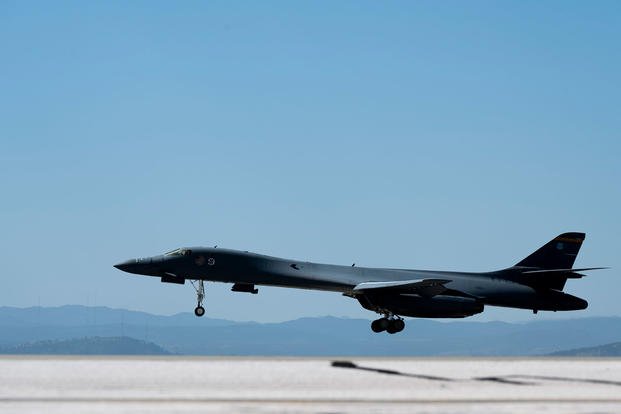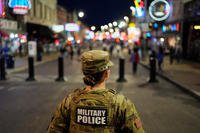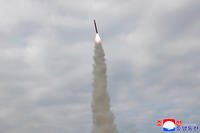Flights at Ellsworth Air Force Base in South Dakota have been stopped amid investigations and runway cleanup following the crash of a B-1B Lancer last week.
In an emailed statement, Col. Derek Oakley, the 28th Bomb Wing commander at Ellsworth, said flights of the B-1B Lancer bomber fleet are currently stopped.
"Flying operations were paused on Jan. 4, to ensure the safety of our airmen and airfield," Oakley said in an emailed statement. "We are carefully assessing checklists and safety procedures to resume flight operations as soon as possible."
The B-1B Lancer has been in service with the Air Force since the mid-1980s, and about 60 of the aircraft are left in the fleet, which is divided between Dyess Air Force Base in Texas and Ellsworth near Rapid City, South Dakota.
Air Force Global Strike Command officials confirmed that flight operations at Dyess were not stopped following the crash.
The B-1B Lancer bomber crashed while trying to land at Ellsworth on Jan. 4.
The incident, which occurred around 5:50 p.m. local time, happened during a training mission with a crew of four, Ellsworth Air Force Base said in a Facebook post.
Oakley said in a video Monday that there were two B-1B Lancers involved in the training mission. The first one landed successfully, while the second one crashed.
All four crew members ejected and received medical care.
"Three of the aircrew were treated on base for minor injuries and released, and one airman is currently being treated at a local hospital for non-life-threatening injuries," Oakley said in the video.
The base said in the public statement that a board of officers will investigate the incident.
"Losing an aircraft is difficult, but I cannot overemphasize that we have four safe aircrew who are surrounded by their loving families, Ellsworth airmen and our local community," Oakley said in the video.
Each one of the bombers costs roughly $317 million, according to a service fact sheet. The B-1B Lancer is a long-range bomber that at one point was nuclear capable but hasn't been since 2007.
"The United States eliminated the nuclear mission for the B-1 in 1994," an Air Force fact sheet detailed. "Even though the Air Force expended no further funding to maintain nuclear capabilities, the B-1 was still considered a heavy bomber equipped for nuclear armament until 2007."
Last week's crash marks the latest incident involving a B-1B Lancer. In 2022, Military.com reported that a B-1B at Dyess caught fire, sending two people to the hospital.
Between 1984 and 2021, the latest data available from the service, there have been a total of 29 Lancer Class-A mishaps -- the term used for the deadliest and most expensive incidents -- and 11 people have been killed.
The last crash of a B-1 was a little over a decade ago, when a Lancer out of Ellsworth crashed on Aug. 19, 2013, near Broadus, Montana. The crew safely ejected and no civilians were harmed, although there was damage to private property when pasture land caught fire and the loss of the aircraft was estimated at $317.7 million, according to a news release at the time.
The Air Force unveiled its latest bomber, the B-21 Raider, in late 2022. It's the first new bomber in the American military's fleet in more than 30 years and aims to eventually replace the B-2 Spirit bomber, as well as the B-1B Lancer, sometime in the 2030s.
The Pentagon plans to build 100 B-21s, more than the Air Force's B-2 and B-1B Lancer fleets combined, with an average unit cost for each bomber of nearly $700 million, according to a service fact sheet.
Related: B-1B Lancer Bomber Crashes at Air Force Base in South Dakota During Training Mission














